No 8825 Stainless Steel 3mm 4mm 5mm Incoloy 825 SS Sheet Metal
Product Description
Alloy 825 (UNS N08825) is an austenitic nickel-iron-chromium alloy with additions of molybdenum, copper and titanium. It was developed to provide exceptional resistance to numerous corrosive environments, both oxidizing and reducing.
The nickel content of Alloy 825 makes it resistant to chloride stress-corrosion cracking, and combined with molybdenum and copper, provides substantially improved corrosion resistance in reducing environments when compared to conventional austenitic stainless steels. The chromium and molybdenum content of Alloy 825 provides resistance to chloride pitting, as well as resistance to a variety of oxidizing atmospheres. The addition of titanium stabilizes the alloy against sensitization in the as-welded condition. This stabilization makes Alloy 825 resistant to intergranular attack after exposure in the temperature range which would typically sensitize un-stabilized stainless steels.
Alloy 825 is resistant to corrosion in a wide variety of process environments including sulfuric, sulfurous, phosphoric, nitric, hydrofluoric and organic acids and alkalis such as sodium or potassium hydroxide, and acidic chloride solutions.
The fabrication of Alloy 825 is typical of nickel-base alloys, with material readily formable and weldable by a variety of techniques.
Chemical Analysis (Weight %)
| Nickel | 38.0 min.–46.0 max. | Iron | 22.0 min. |
| Chromium | 19.5 min.–23.5 max. | Molybdenum | 2.5 min.–3.5 max. |
| Molybdenum | 8.0 min.-10.0 max. | Copper |
1.5 min.–3.0 max. |
| Titanium | 0.6 min.–1.2 max. | Carbon | 0.05 max. |
| Niobium (plus Tantalum) | 3.15 min.-4.15 max. | Titanium | 0.40 |
| Carbon | 0.10 | Manganese | 1.00 max. |
| Sulfur | 0.03 max. | Silicon | 0.5 max. |
| Aluminium | 0.2 max. |
Mechanical Properties
| Yield Strength 0.2% Offset |
Ultimate Tensile Strength |
Elongation in 2 in. |
Hardness |
| psi (min.) | (MPa) | psi (min.) | (MPa) | % (min.) | Rockwell B |
| 49,000 | 338 | 96,000 | 662 | 45 | 135-165 |
Typical Room Temperature Mechanical Properties, Mill Annealed
Alloy 825 has good mechanical properties from cryogenic to moderately high temperatures. Exposure to temperatures above 1000°F (540°C) can result in changes to the microstructure that will significantly lower ductility and impact strength. For that reason, Alloy 825 should not be utilized at temperatures where creep-rupture properties are design factors. The alloy can be strengthened substantially by cold work. Alloy 825 has good impact strength at room temperature, and retains it’s strength at cryogenic temperatures.
Charpy Keyhole Impact Strength
| Temperature | Orientation | Impact Strength* |
| °F | °C | ft-lb | J | |
| Room | Room | Longitudinal | 79.0 | 107 |
| Room | Room | Transverse | 83.0 | 113 |
| -110 | -43 | Longitudinal | 78.0 | 106 |
| -110 | -43 | Transverse | 78.5 | 106 |
| -320 | -196 | Longitudinal | 67.0 | 91 |
| -320 | -196 | Transverse | 71.5 | 97 |
| -423 | -253 | Longitudinal | 68.0 | 92 |
| -423 | -253 | Transverse | 68.0 | 92 |
Applications
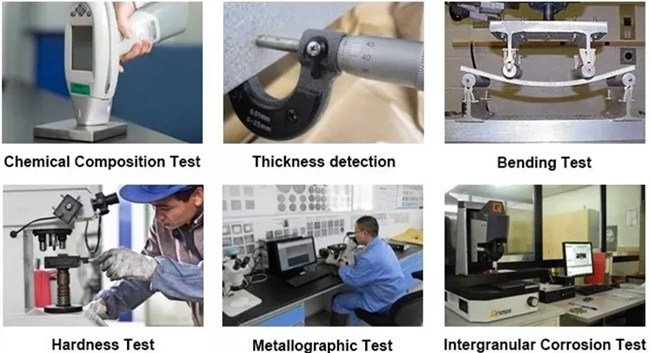




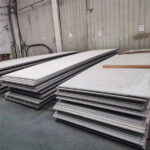
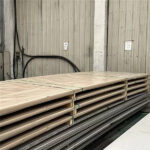
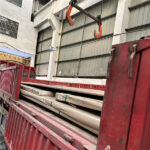


.jpg)
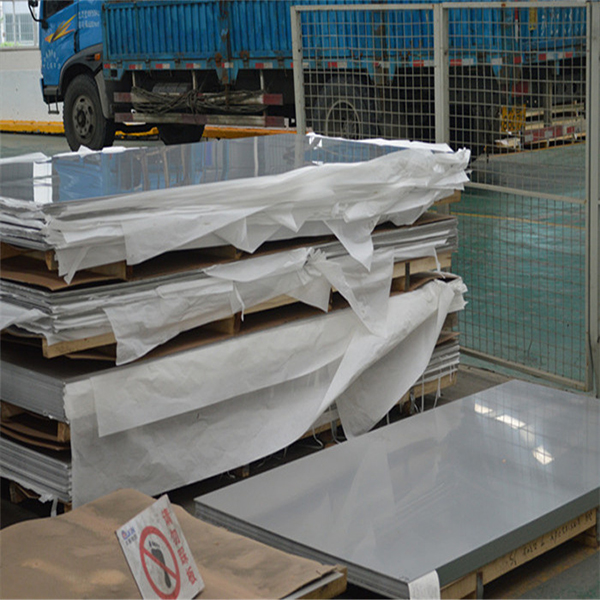

.jpg)
.jpg)



